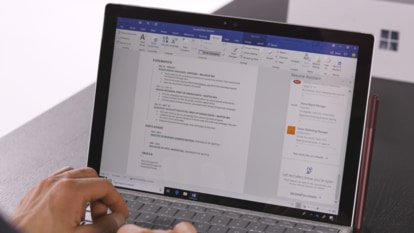Cloud storage: Parking space in the clouds
Back in the days of grandfather, one used to backup data on floppy drives. Then came optical drives — CD, DVD... Microsizing brought data cards and pen drives. Now, all you need is a fast Internet connection. Gagandeep Singh Sapra writes.
Back in the days of grandfather, one used to backup data on floppy drives. Then came optical drives — CD, DVD... Microsizing brought data cards and pen drives. Now, all you need is a fast Internet connection.
Documents, movies, songs and what-have-you — whatever the file there are multiple storage options "in the cloud", the popular term to indicate huge servers that can be accessed through the Internet. These services give free or paid storage and multiple features such as mobile access, recovery of deleted files and full text search.
Here are ways you can make use of cloud storage.
Scenario 1: Simple & secure
You have a huge library of documents and spreadsheets created over time, and you want these to be secure. All you need is to copy them to a remote location and access them as and when you need them. Simple need. Any cloud storage provider will do, such as Amazon, Windows Sky Drive, iDrive or Dropbox.
Amazon (www.amazon.com/clouddrive/) offers 5GB of free storage, and you can upload files via web browser. No client is needed. With a Web browser, you are on. Need more? Sign up for Windows Live Sky Drive. It gives 25 GB of free storage.
Amazon offers additional storage for as little as $1 (₹50) per GB per year, in packs of 20 GB, 50, 100, 200, 500 or 1TB.
If you delete a file, it moves into a Deleted Files folder, which you can empty at your convenience.
The Windows Sky Drive (http://www.skydrive.com) enables access for Windows Phone and iPhone/iPad, which lets you access your files easily via these handsets. For other devices, the web browser route is available.
The Sky Drive allows you to share individual files in your cloud storage with Facebook, Linked-in or email friends.
Uploading is a bit clunky on the Sky Drive — individual files need to be selected one by one, while Amazon lets you do uploads in batches
Scenario 2: No logging on
Now for a sophisticated option. My parents, for instance, cannot be bothered to log on to a site each time they do something with a file and want it backed up. They want the cloud storage to monitor the files and update them and back them up automatically.
This means the cloud should also provide a client (a desktop application) to manage the uploads.
There are a couple of options that are capable of doing this. For instance, iDrive (www.idrive.com) provides 5 GB of free storage, and 150 GB for $49.50(approximately ₹2,500) a year. It has a client for both Windows and Mac, and multiple mobile apps for photos and contacts. But it is designed primarily to back up files remotely, and when you need these files — for instance if you have bought a new PC — you can just get them from the remote backup.
The alternative, Carbonite (www.carbonite.com), does not offer a free plan, but has some very interesting details in its menu. For $59 (₹2,950) a year, you can back up unlimited data to their servers from a single PC — Mac or Windows. It backs up the files, and if you so wish, you can also access these files via a handset, iPhone, Android or blackberry. Their $99-a-year (₹4,950) plan allows you to back up files to an external hard disk as well as the cloud — all automatically.
Scenario 3: On the go, many machines
What happens if you have multiple devices? For instance, I started writing this article in my office, and wanted to resume exactly where I left off when I reached home — on my home PC. And what if my editor wants it suddenly? I should be able to e-mail it while I am on the move.
There are two brilliant services for this scenario too.
My favourite is Dropbox (www.dropbox.com). A free 2GB account, and a 100GB account at $199 (₹9,950) per annum. Install Dropbox on all your machines, and it synchronises the files across all these machines and also keeps a copy of all these files on its servers. If you subscribe to an additional service called Packrat, you can keep multiple versions of a file.
The other alternative is SugarSync (www.sugarsync.com). They set you up with a free 5GB storage when you sign up, and get the same features as Dropbox.
You can also upload/sync by email which allows quite a bit of flexibility.


Catch all the Latest Tech News, Mobile News, Laptop News, Gaming news, Wearables News , How To News, also keep up with us on Whatsapp channel,Twitter, Facebook, Google News, and Instagram. For our latest videos, subscribe to our YouTube channel.







































